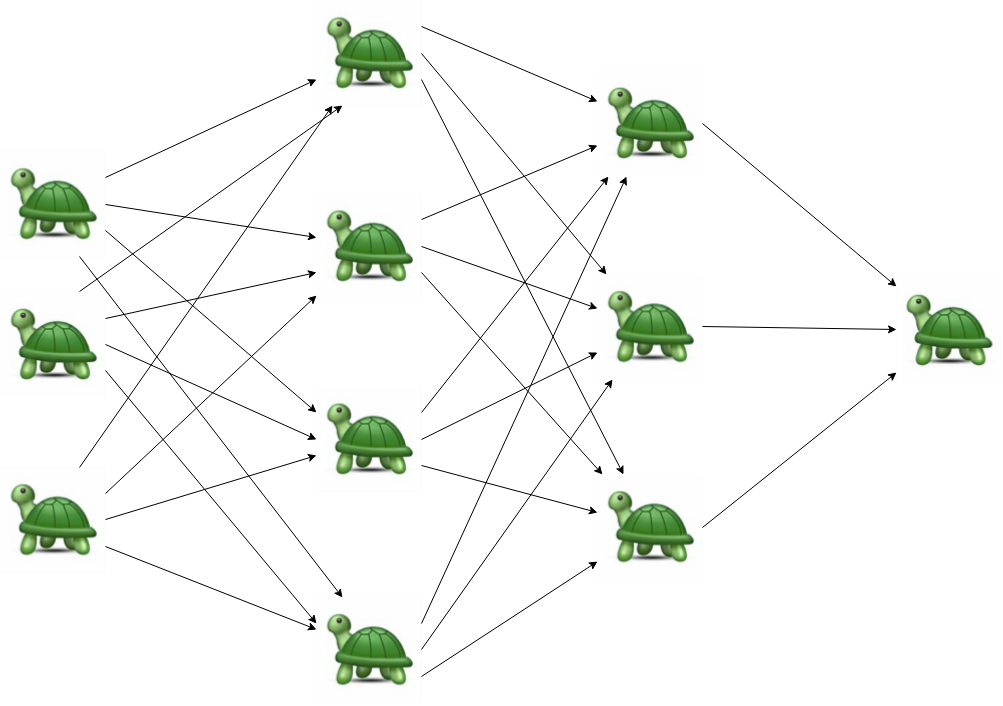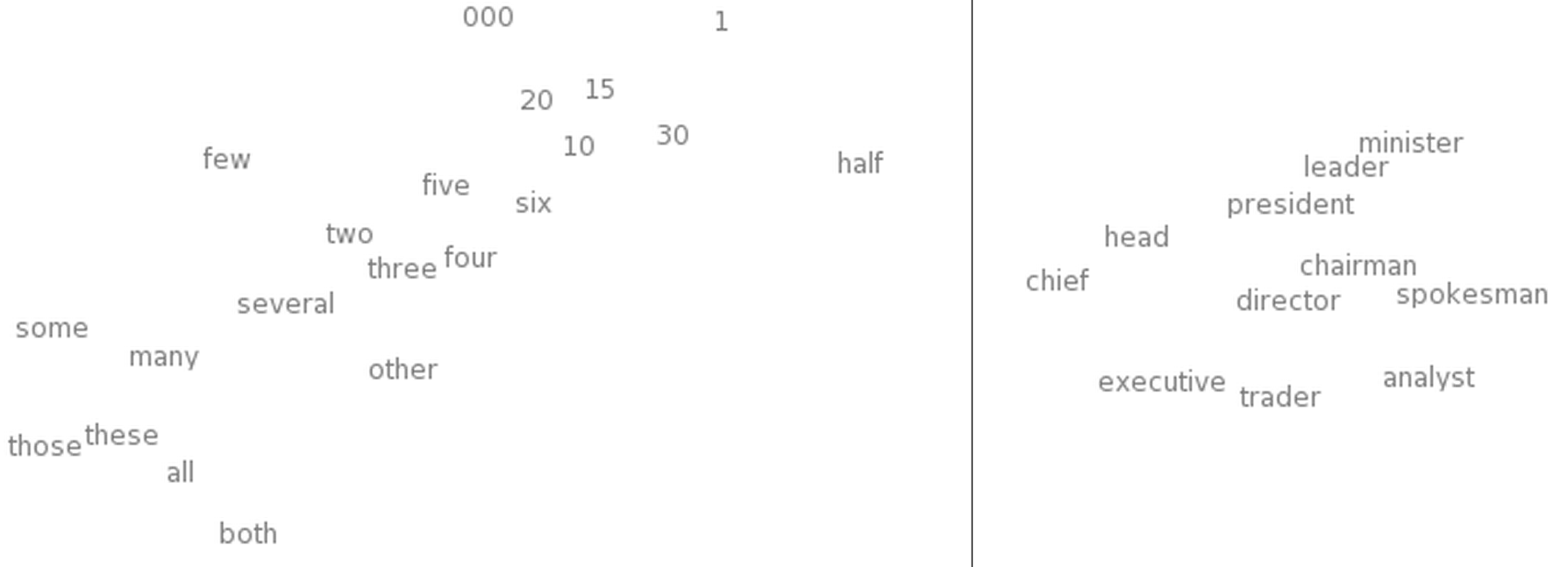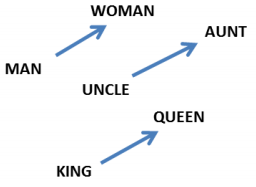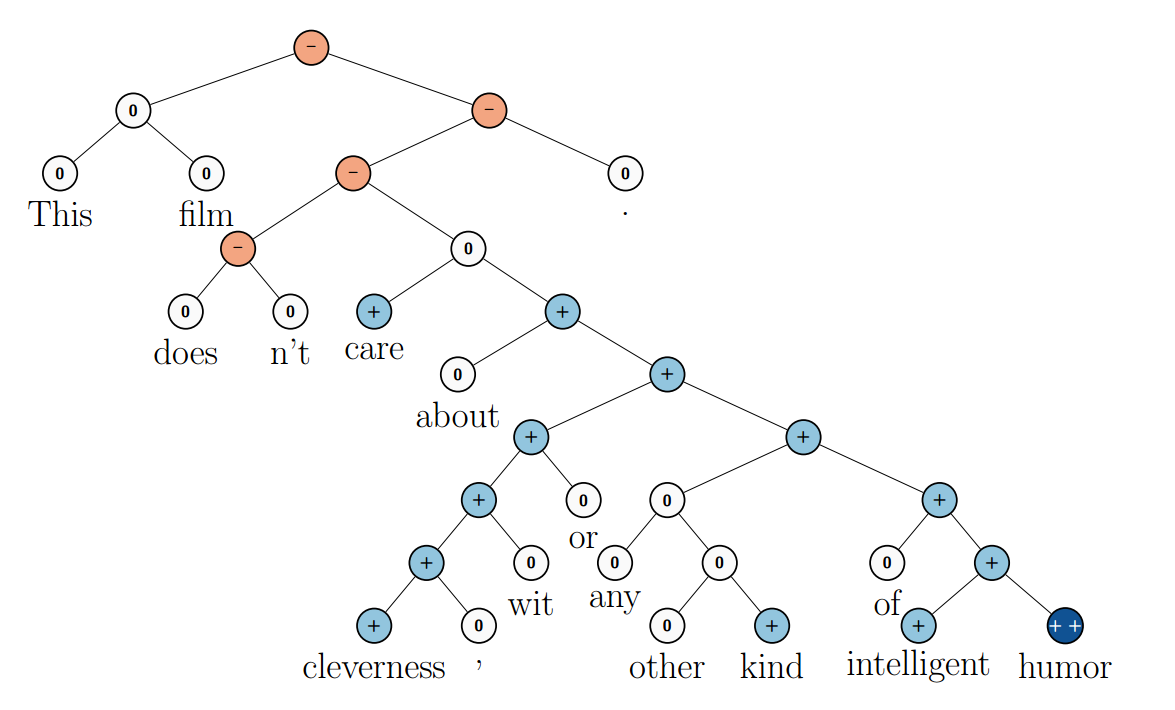Practical NLP Applications of Deep Learning


What is Deep Learning?
Turtles all the way down...

So what's the big deal?
MASSIVE improvements in Computer Vision

Speech Recognition
- Baidu (with Andrew Ng as their chief) has built a state-of-the-art speech recognition system with Deep Learning
- Their dataset: 7000 hours of conversation couple with background noise synthesis for a total of 100,000 hours
- They processed this through a massive GPU cluster
Cross Domain Representations
- What if you wanted to take an image and generate a description of it?
- The beauty of representation learning is it's ability to be distributed across tasks
- This is the real power of Neural Networks

But Samiur, what about NLP?
Deep Learning NLP
- Distributed word representations
- Dependency Parsing
- Sentiment Analysis
- And many others ...
Standard
- Bag of Words
- A one-hot encoding
- 20k to 50k dimensions
- Can be improved by factoring in document frequency
Word embedding
- Neural Word embeddings
- Uses a vector space that attempts to predict a word given a context window
- 200-400 dimensions
motel [0.06, -0.01, 0.13, 0.07, -0.06, -0.04, 0, -0.04]
hotel [0.07, -0.03, 0.07, 0.06, -0.06, -0.03, 0.01, -0.05]
Word Representations

Word embeddings make semantic similarity and synonyms possible



Word embeddings have cool properties:
Dependency Parsing
Converting sentences to a dependency based grammar

Simplifying this to the verbs and it's agents is called Semantic Role Labeling

Sentiment Analysis
- Recursive Neural Networks
- Can model tree structures very well
- This makes it great for other NLP tasks too (such as parsing)

Get to the applications part already!
Tools
- Python
- Java/Clojure/Scala
- APIs
Problem: Funding Sentence Classifier
Build a binary classifier that is able to take any sentence from a news article and tell if it's about funding or not.
eg. "Mattermark is today announcing that it has raised a round of $6.5 million"
Word Vectors
- Used Gensim's Word2Vec implementation to train unsupervised word vectors on the UMBC Webbase Corpus (~100M documents, ~48GB of text)
- Then, iterated 20 times on text in news articles in the tech news domain (~3M documents, ~900MB of text)
Sentence Vectors
- How can you compose word vectors to make sentence vectors?
- Use paragraph vector model proposed by Quoc Le
- Feed into an RNN constructed by a dependency tree of the sentence proposed by Richard Socher
- Convolution Neural Networks proposed by Yoon Kim
- Use heuristic function to combine the string of word vectors
What did we try?
- TF-IDF + Naive Bayes
- Word2Vec + Composition Methods
- Word2Vec + TF-IDF + Composition Methods
- Word2Vec + TF-IDF + Semantic Role Labeling (SRL) + Composition Methods
Composition Methods


Where wi represents the i'th word vector,
wv the word vector for the verb, and a0 and a1 are agents
What worked?
- Word2Vec + TFIDF + SRL + Circular Convolution
- The first method with simple TFIDF/Naive Bayes performed extremely poorly because of it's large dimensionality
- Combining TFIDF with Word2Vec provided a small, but noticeable improvement
- Adding SRL and a more sophisticated composition method increased performance by almost 5%
What else is possible?
- Can we apply this method to generate general purpose document vectors?
- We are currently using LDA (a topic analysis method) or simple TFIDF to create document vectors
- How will this method compare to the already proposed paragraph vector method by Quoc Le?
Document Vectors
Document Search
- Can we associate these document vectors with much smaller query strings?
- eg. Search for artificial intelligence against our companies and get better results than keyword search
Mattermark is Hiring!
Contact me at:
- @samiur1204
- samiur@mattermark.com